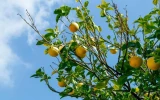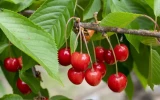15 Best Fruit Trees to Grow on the Sunshine Coast
With its warm, sunny weather and well-drained soil, a variety of fruit trees thrive in the Sunshine Coast, offering not only a lush addition to your garden but also the pleasure of home-grown produce. You'll want to choose species that thrive in the coastal conditions, can tolerate the humidity, and are resilient against local pests.
The top 15 best fruit trees you can grow on the Sunshine Coast are:
- Mango
- Avocado
- Citrus (Lemon, Lime, Orange, Mandarin)
- Macadamia
- Banana
- Papaya (Pawpaw)
- Guava
- Lychee
- Passionfruit
- Pineapple
- Fig
- Olive
- Peach
- Nectarine
- Custard Apple
For those of you with limited space, you'll be delighted to know that there are dwarf fruit tree varieties perfect for potting. Imagine stepping outside to pluck a ripe lemon or a sweet orange right from your balcony or courtyard. These dwarf varieties provide a practical solution for gardeners who wish to enjoy homegrown fruit but face space constraints.
Summary
- Citrus trees, with their fragrant blossoms and tangy fruits, are a popular choice for local gardeners and can be grown even in smaller spaces.
- If you're after something more exotic, tropical fruits like lychees or passionfruit might be the perfect addition to your home garden, providing both unique flavors and an eye-catching element to your landscaping.
- Dwarf varieties of fruit trees, such as Wurtz Dwarf avocado and dwarf citrus, offer a practical solution for gardeners with limited space, enabling them to enjoy homegrown fruit from balconies or courtyards.
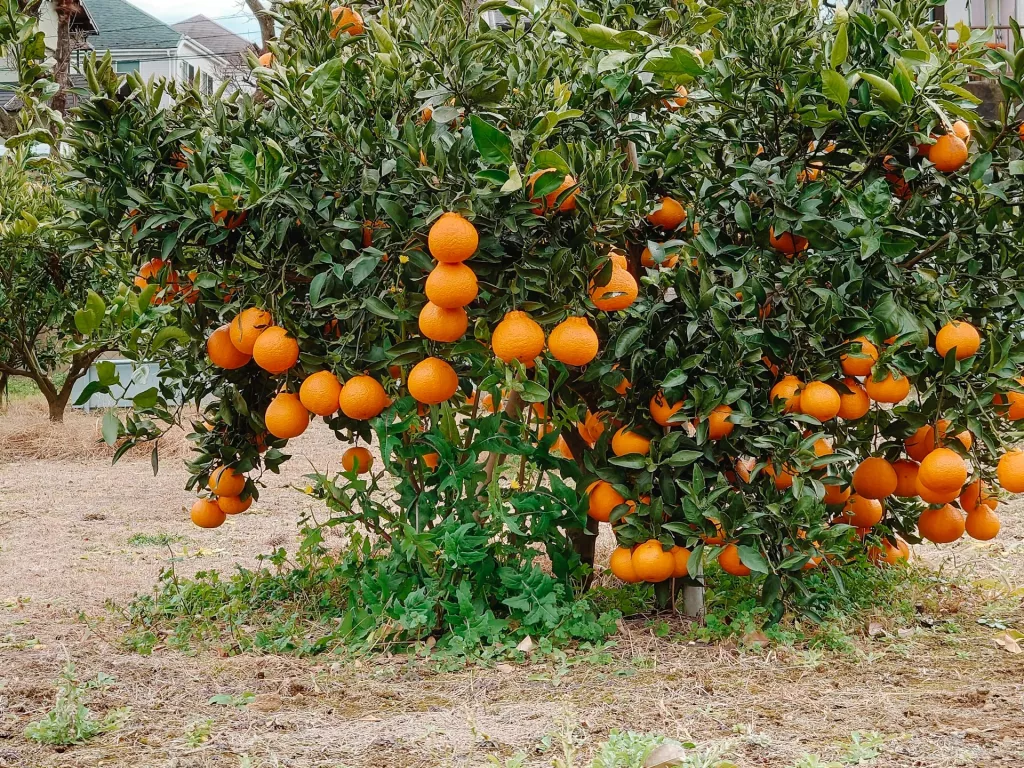
On this page:
- Mango Trees - Mangifera Indica
- Avocado Trees - Persea Americana
- Citrus Trees - Citrus spp.
- Macadamia Nut Trees - Macadamia Spp.
- Banana Trees - Musa Spp.
- Papaya (Pawpaw) Trees - Carica Papaya
- Guava Tree - Psidium Guajava
- Lychee Tree - Litchi Chinensis
- Passionfruit Vine - Passiflora Edulis
- Fig Tree - Ficus Carica
- Olive Tree - Olea Europaea
- Peach Tree - Prunus Persica
- Nectarine Tree - Prunus Persica Var. Nucipersica
- Custard Apple Tree - Annona Reticulata
- Pineapple Plants
Mango Trees - Mangifera Indica
Mangifera indica, known for its sweet, tropical fruit, thrives in this region's warm, coastal environment. For the best growth and fruit production, ensure your mango has well-drained soil, full sun exposure, and protection from frosts.
When you're looking to purchase a mango tree, consider visiting local nurseries, which may offer a variety of mango trees suited for South East Queensland. Young trees should be watered regularly until established, and then can be watered less frequently.
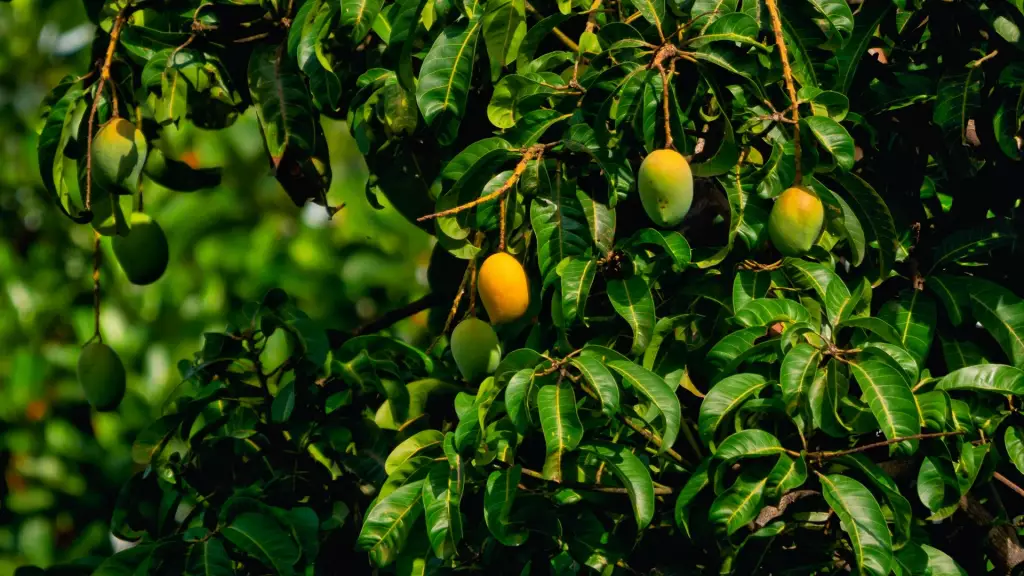
Did you know that mango trees are one of the most lucrative trees in the world? Find out why.
Here's a quick guide to mango tree care:
| Care Aspect | Tip |
|---|---|
| Soil | Prefers rich, well-drained soil |
| Watering | Regular when young; reduce as it matures |
| Climate | Loves warm, tropical climates like the Sunshine Coast |
Avocado Trees - Persea Americana
These evergreen trees appreciate the region's coastal conditions, making them an ideal choice for your garden. Varieties like the Wurtz Dwarf can even be grown in pots and are perfect for smaller gardens.
Planting location
Choose a spot with well-draining soil and sufficient sunlight. Avocado trees prefer a sheltered location to protect them from strong winds, which can be common in coastal areas.

Watering habits
- Young avocado trees: Water regularly to establish strong roots.
- Mature avocado trees: Deep, infrequent watering encourages a robust root system.
Tip: Avoid overwatering avocado trees, as this can lead to root rot.
Soil and mulching
- Soil should be rich in organic matter.
- Add mulch to retain moisture, but keep it 6 inches away from the trunk to prevent disease.
When selecting an avocado tree, consider varieties like ‘Hass’ or the cold-hardy ‘Fuerte,’ which has a history of flourishing after frost events. Avocados from your very own tree can take a few years to come in. Here's an article on when to pick avocados.
Citrus Trees - Citrus spp.
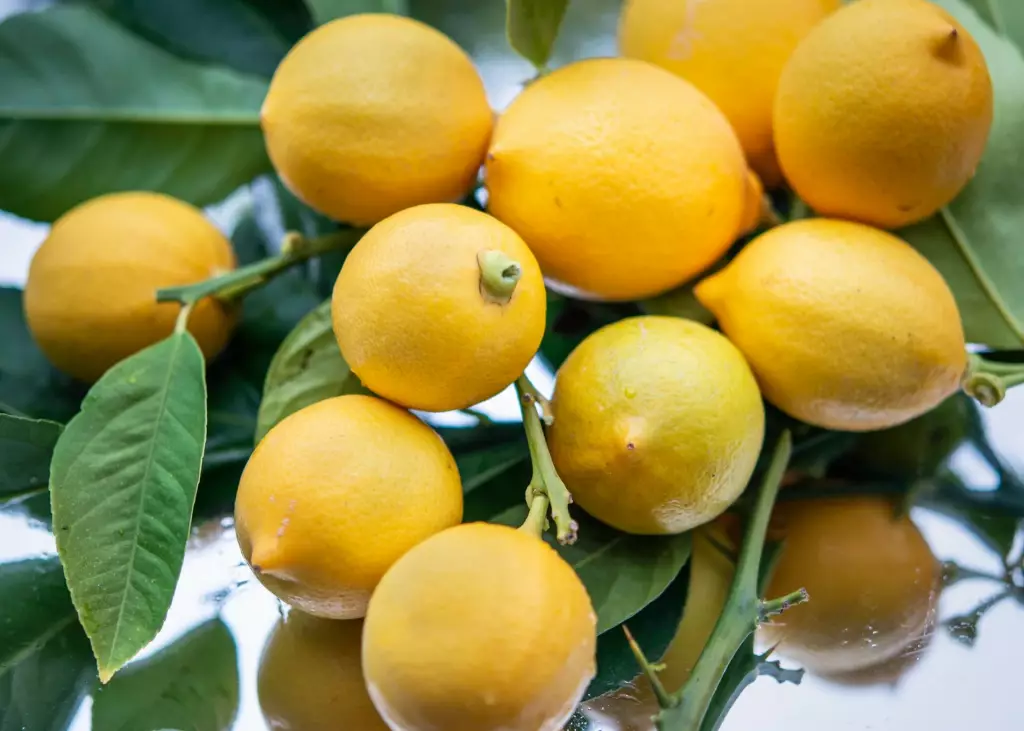
Lemons (Citrus limon)
Varieties like the Eureka or Lisbon produce abundant and juicy lemons nearly year-round. These trees can be grown as dwarf citrus, so even with limited space, you can have a productive lemon tree. Lemon trees need plenty of water, especially when fruit is developing.
Limes (Citrus aurantiifolia)
You can opt for varieties such as the Tahitian or Kaffir lime, which are well suited for the region's climate. Limes can also be grown as semi-dwarf varieties, allowing for easier harvesting and garden management.
Oranges (Citrus sinensis)
Sunshine Coast is conducive to growing sweet and succulent oranges. With varieties like the Valencia for juicing or the Navel for snacking, your orange trees will be a delightful addition. These trees generally require a bit more space, but do well as dwarf citrus trees if you're short on room.
Mandarins (Citrus reticulata)
Mandarins are perfect for a low-maintenance citrus option, as many varieties are self-fertile. They bear fruit that's easy to peel and bursting with flavor. Choose from options like the Imperial or Emperor for a delicious, sweet crop that's usually ready to pick by late fall to early winter.
Grapefruits (Citrus × paradisi)
With their larger size, ensure they have enough room to expand in both the garden and the root zone. For grapefruit lovers, both yellow and red-fleshed varieties grow well in the local sunny conditions. They benefit from regular watering and light, frequent fertilizing.
Other citrus varieties
-
Kumquat: Compact and ornamental, kumquats like Calamondin provide small, zesty fruits that can be eaten whole.
-
Finger Lime: For a native twist, the Australian Finger Lime adds a burst of citrus caviar to dishes, making it a conversation-starter in any garden.
Macadamia Nut Trees - Macadamia Spp.
Originating in Australia, Macadamia trees are a native choice for your tropical fruit assortment. These nut-bearing trees need fertile soil and require enough water to produce their creamy, richly flavored macadamia nuts. Patience is key, as they can take several years to begin producing.
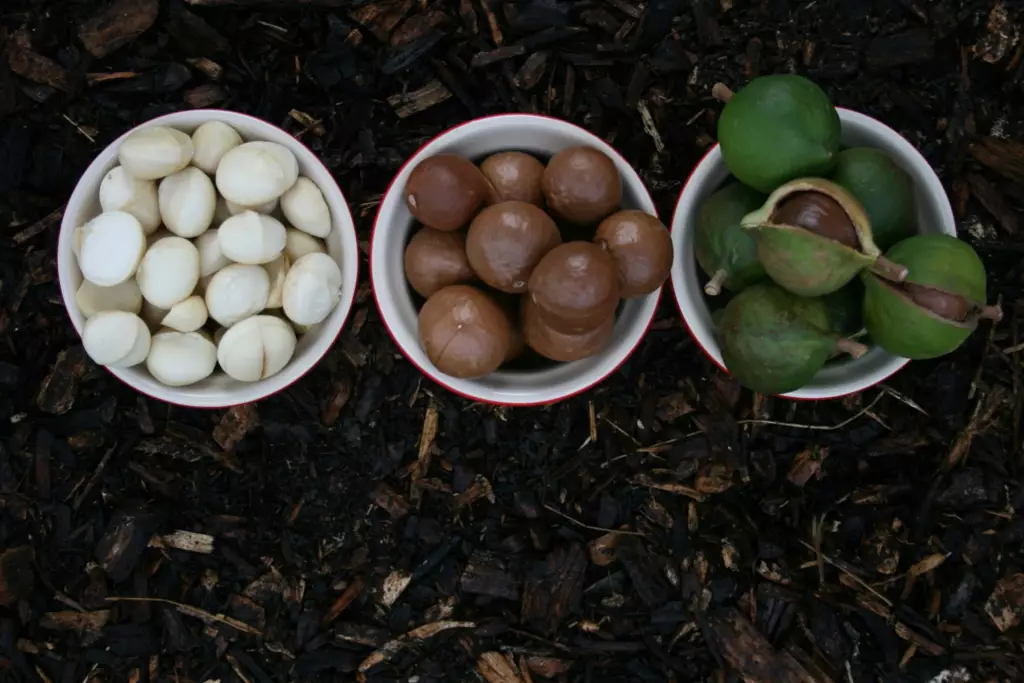
-
Light requirements: Your Macadamia nut tree thrives in full sunlight. Ensure you plant it in a spot that basks in plenty of sunshine to promote robust foliage and plentiful nut production.
-
Soil needs: Macadamias prefer well-drained soil, rich in organic matter. The suggested pH range is between 5.5 and 6.5.
-
Watering schedule: Consistent watering helps young trees establish. Once mature, they are somewhat drought-tolerant, but adequate moisture is key during the flowering and nut development stages.
-
Growth and spacing: Macadamias can grow quite large, with some varieties requiring more space. For example, the Beaumont variety stands out as compact and ideal for home gardens.
-
Fertilizing: For best results, give your macadamia a balanced, slow-release fertilizer as recommended for fruit-bearing trees.
-
Pruning: Light pruning aids in maintaining an accessible shape and size, and encourages healthy growth.
-
Harvesting: Patience is a virtue; macadamias can take several years to begin producing nuts. Once they do, the nuts will fall to the ground when ripe, making harvest straightforward.
-
Nutrients: Macadamia nuts are a nutrient-dense food, packed with healthy fats, vitamins, and minerals such as magnesium and potassium.
Banana Trees - Musa Spp.
Your banana trees require a combination of frequent watering and rich, organically enhanced soil to flourish. On the Sunshine Coast, the warm and humid conditions are perfect for these fast-growing plants, which can provide you with an edible harvest in a relatively short time.
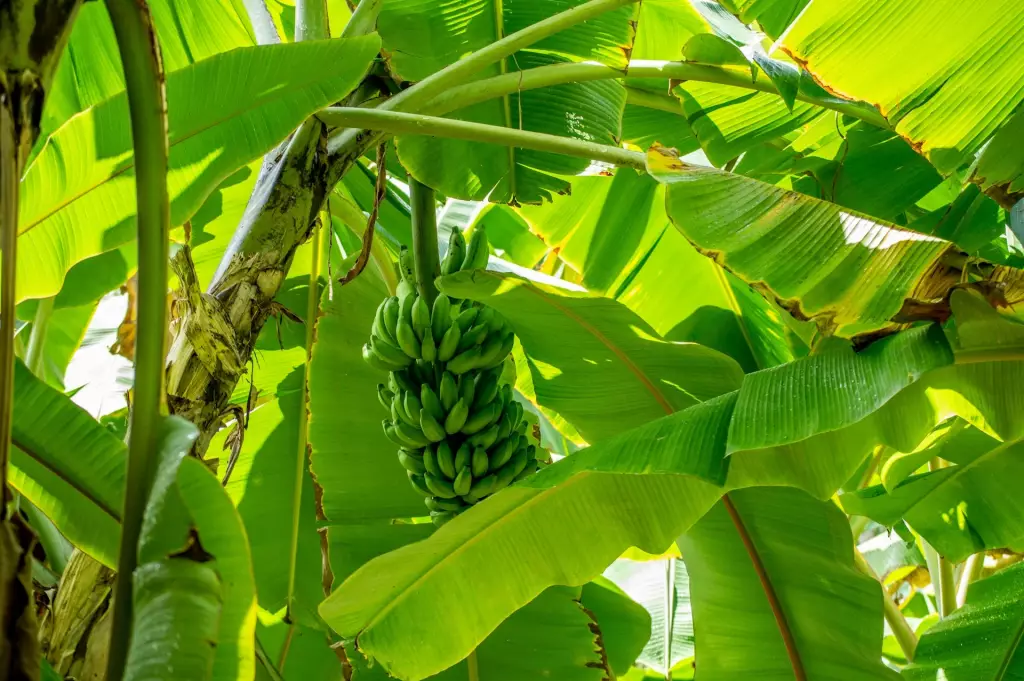
Banana trees not only provide a lush, tropical ambiance but also bear the wonderfully sweet tropical fruit you can enjoy. Here are some tips you should know about growing banana trees in this region.
Climate and location
Banana plants love the warm, humid climate typically found on the Sunshine Coast. Choose a sunny spot protected from strong winds, where temperatures consistently hover between 60°F and 80°F.
| Ideal Temperature Range | Sunshine Requirement | Wind Protection |
|---|---|---|
| 60°F–80°F | Full sun to partial shade | Yes |
Soil and watering
Banana trees thrive in rich, well-draining soil. Ensure you're providing plenty of water, especially during dry spells, to keep the soil moist.
- Soil: Rich and well-draining
- Watering: Regular to maintain soil moisture
Care and maintenance
When you notice your banana tree has been growing for about 6 to 8 months, allow one sucker, or shoot at the base, to remain. This sucker will become the main stem in the future. After fruiting, cut the main stem down to 2.5 feet, and remove the rest after a few weeks, keeping the replacement sucker.
- Pruning: Leave one sucker after 6-8 months
- Post-fruit care: Cut main stem post-fruiting to 2.5 feet
Papaya (Pawpaw) Trees - Carica Papaya
Papaya trees need sunlight and plenty of water with good drainage to prevent root rot. These tropical plants often start bearing fruit within a year of planting. The key to a healthy papaya tree lies in maintaining moist, fertile soil and protecting it from cold snaps.

Choosing the right spot
Ensure you plant your papaya in a location that receives full sun exposure. They need rich, well-draining soil to flourish. Papayas are sensitive to freezing temperatures, so pick a spot shielded from cold winds.
Planting and care
- Soil: Start with rich, well-drained soil.
- Water: Keep the soil consistently moist, but not waterlogged.
- Fertilizer: Apply a balanced fertilizer regularly during the growing season.
Guava Tree - Psidium Guajava
Its ability to produce luscious fruit while adding a tropical flair to your space makes it a valuable addition. The sweet, fragrant fruit of guava trees can be an exotic highlight, offering a taste of the tropics year-round.
Characteristics:
- Mottled greenish bark
- Serrated leaves, 3–7 inches long
- White flowers, 1-inch across
| Fruit Profile | Guava Tree |
|---|---|
| Shape | Round, oval, pear |
| Size | Small to medium |
| Flavor | Rich & sweet |
| Uses | Fresh, juice, jams |
To get your Guava Tree thriving, ensure it's planted in well-drained soil, with a pH between 5 and 7. Provide full sunlight and protect it from frost to promote healthy growth.

During summer to fall and late winter to spring, you'll be rewarded with delicious guavas. Regular watering is key, but be cautious not to over-water. This tree can reach up to 20 feet, so give it room to flourish.
Remember, starting with seeds requires patience as germination can take 3–10 weeks. Warm temperatures, around 77°F, foster optimal germination conditions. Once your tree reaches about 12 inches, it's ready for the garden.
Lychee Tree - Litchi Chinensis
You can enjoy these trees both for their fruits and as ornamental additions to your garden. The Lychee Tree, with its broadleaf evergreen form, thrives in the warm, humid climate of the Sunshine Coast.
Site requirements
- Sunlight: For optimal growth, choose a location that receives full sun.
- Wind: Plant in a protected area to prevent damage from strong winds.
- Soil: Lychees prefer acidic soil with a pH of 5.0-5.5.
Watering
Consistent watering is crucial, especially during flowering and fruit development stages. However, ensure good drainage to prevent root rot.
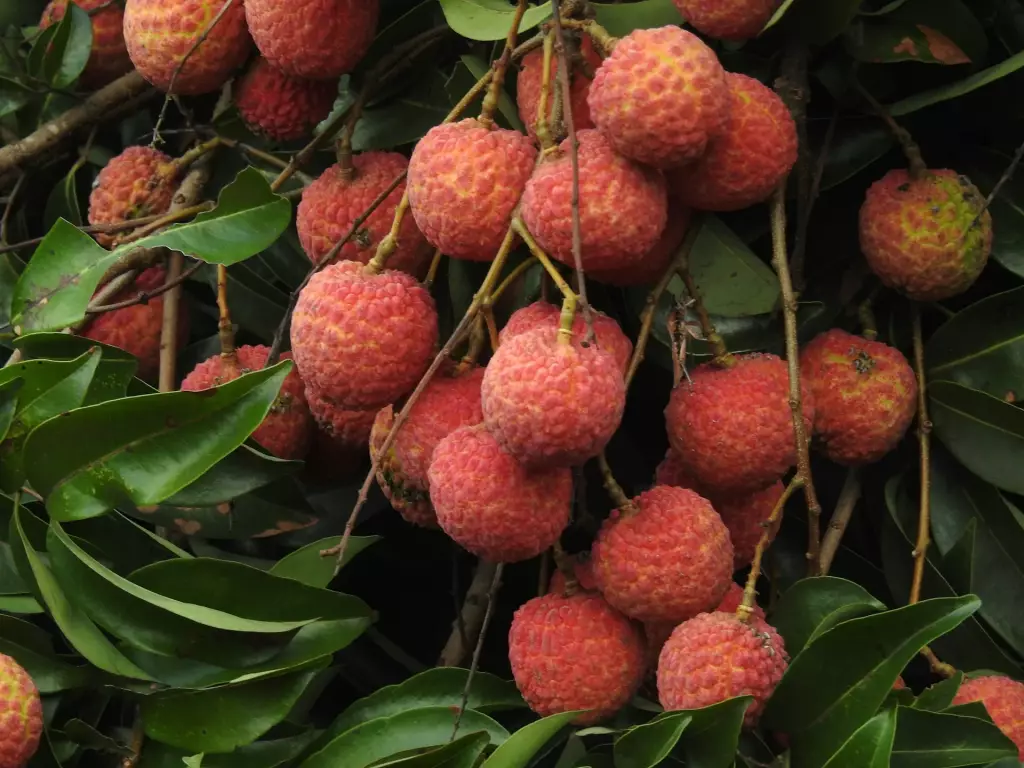
Climate considerations
The Sunshine Coast's climate is generally favorable, but be mindful of frost, which can damage the lychee tree.
Cultivars for your garden
- Brewster
- Mauritius
Passionfruit Vine - Passiflora Edulis
For your garden in South East Queensland, Passiflora edulis is perfect due to its love for warm, subtropical climates. When you plant a passionfruit vine, you're choosing a plant that not only yields delicious fruit but also graces your garden with its beautiful flowers.
Getting started
- Plant in spring after the last frost to give your vine a good start.
- Choose a sunny spot with well-draining soil.
- Support your vine with a fence or trellis for vertical growth.
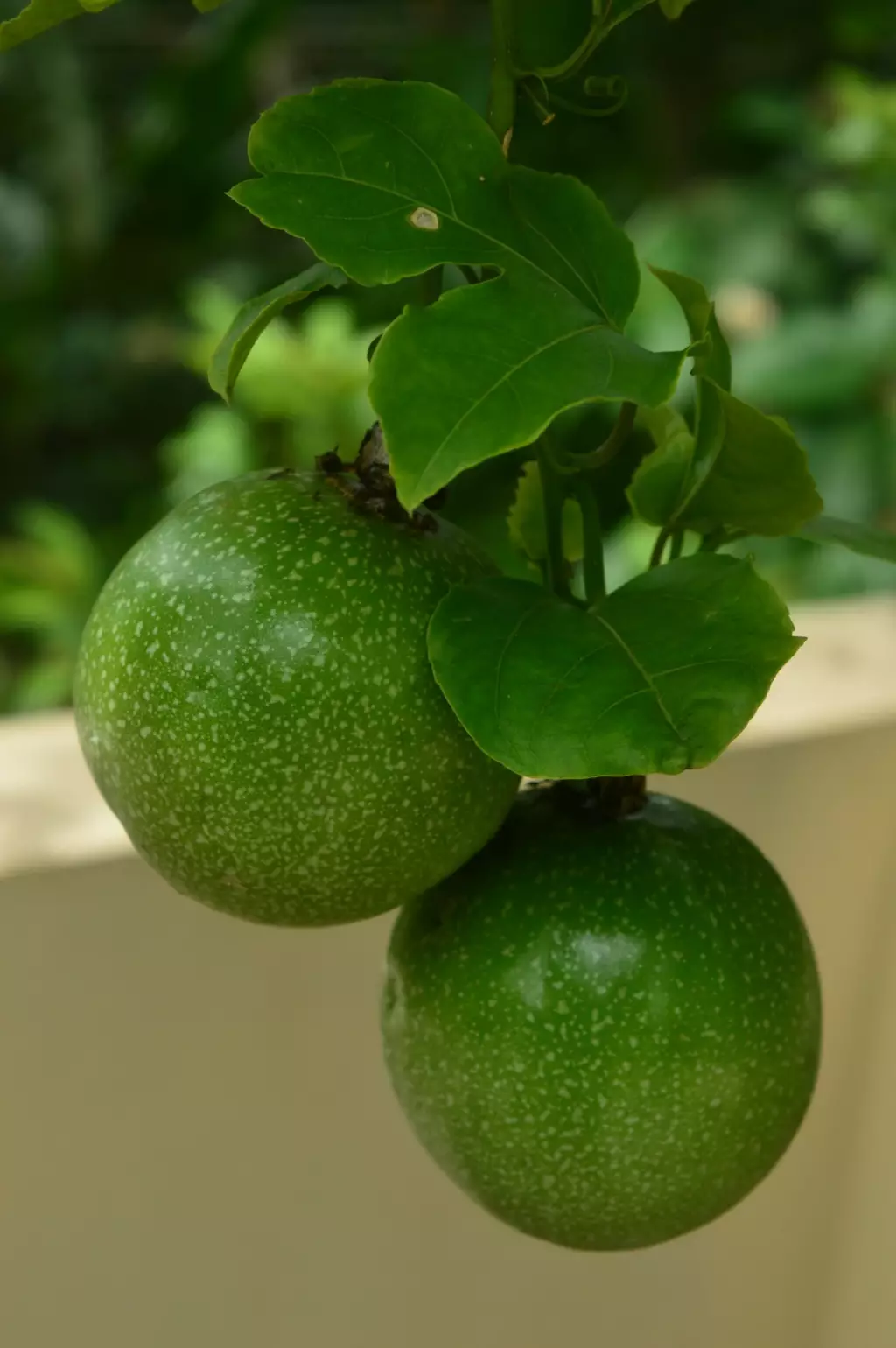
Care instructions
- Watering: Ensure consistent moisture but avoid waterlogging. Passionfruit vines enjoy regular watering, especially during fruiting seasons.
- Soil: Aim for rich soil with organic matter. A pH between 5.5 and 6.5 is ideal.
- Feeding: Fertilize with a balanced, all-purpose feed during growth periods.
Pollination & harvesting
- Bees love passionflower blooms, aiding in natural pollination. If you notice poor fruit set, you can hand pollinate as well.
- Fruits are ready when they turn purple or yellow and slightly wrinkle. In Woodford and surrounding areas, you'll likely find this happens throughout summer into autumn.
Fig Tree - Ficus Carica
Fig trees are perfect if you're looking for less maintenance and robust growth. They are adaptable to various soil types but perform best in soil that retains moisture yet drains well.
Ficus carica is a deciduous tree, known for its lush foliage and sweet fruit, figs. Here's a quick guide to get you started:
Climate suitability
- Thrives in warm and temperate climates.
- Prefers full sun exposure for best fruit production.
Soil requirements
- Well-drained soils are ideal for fig trees.
- Check for soil moisture consistency to avoid waterlogged roots.

Fruit characteristics
- Figs are rich and decadent, often enjoyed fresh or dried.
- Harvested when ripe straight from the tree as they don’t ripen after picking.
Varieties
- Consider dwarf mulberries as a similar alternative with less space requirement.
Caring tips
- Prune in winter to maintain shape and improve sun exposure to branches.
- Provide adequate water, especially during fruiting seasons.
Chill hours
- Figs have a low chill hour requirement.
- Great for areas with milder winters like the Sunshine Coast.
Olive Tree - Olea Europaea
Olive trees are a classic choice for gardens in the Sunshine Coast, as they can withstand dry conditions once established. With their Mediterranean origins, olives prefer well-drained soil and plenty of sun.
Renowned for its durability and lovely silver-green foliage, the olive tree is both ornamental and practical. Let's dive into why it's ideal for your garden.
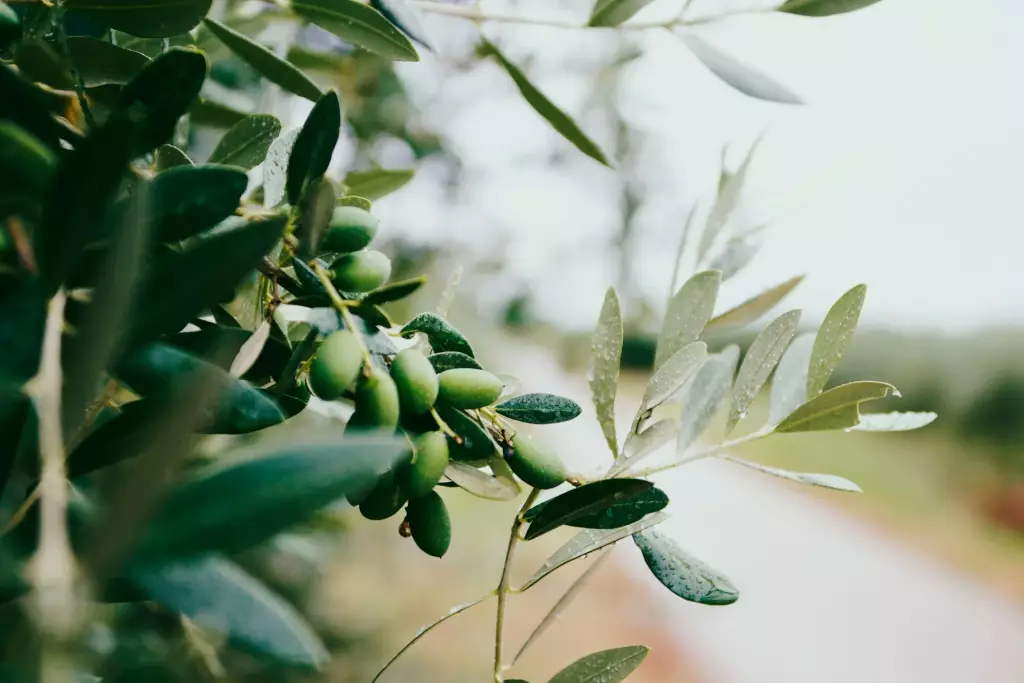
Climate
Your olive tree will thrive in the warm climate the Sunshine Coast offers. It loves full sunlight and can tolerate the region's mild winters, making it a reliable year-round presence in your garden.
Autumn harvest
Get ready for autumn, as this is when your tree will be laden with olives. Harvest them green for a tangy taste or wait until they turn black for a deeper flavor. Ripe olives can also be pressed into rich, homemade olive oil.
| Aspect | Detail |
|---|---|
| Sunlight | At least 6 hours of direct sun daily |
| Watering | Only when top 2 inches of soil are dry |
| Soil | Well-drained, moderately fertile |
| USDA Zones | Suited for Zones 8-11 |
For the best growth, ensure your olive tree is planted in well-drained soil. They don't like wet feet, so improved drainage is vital to avoid waterlogging.
Peach Tree - Prunus Persica
Peach trees are a top choice for stone fruit enthusiasts. These hardy trees thrive in USDA Zones four through nine, with a sweet spot in Zones six through eight. On the Sunshine Coast, you'll find conditions favorable for them to flourish and produce sweet, sun-ripened peaches.
Ideal planting conditions
- Planting time: Spring
- Sunlight: Full sun
- Soil: Moist, well-drained, slightly acidic to neutral

How many peach trees can you plant per acre? Find out here.
To ensure your peach tree grows well, select a planting site with good air circulation and plenty of sunlight. Your peach trees will need about an inch of water per week and regular fertilization to maintain healthy growth and ensure a sweet bounty.
Care tips
- Mulch to conserve soil moisture
- Prune annually for shape and size
- Monitor for pests and diseases
Nectarine Tree - Prunus Persica Var. Nucipersica
Prunus persica var. nucipersica boasts juicy and sweet fruit, a treat for any home gardener. Varieties of nectarines and peaches can be grown with as few as 0-400 hours below 7 degrees Celsius.
Nectarines, the smooth-skinned sibling of the peach, flourish under Sunshine Coast skies. These trees are also deciduous, so you'll enjoy their vibrant foliage throughout the year. Plant your nectarine tree in well-draining soil and ensure it gets full sun for the sweetest fruit.
Climate suitability
Ideal for the Sunshine Coast, nectarine trees thrive in warm climates. They have a low chill requirement, allowing them to flourish in this region.
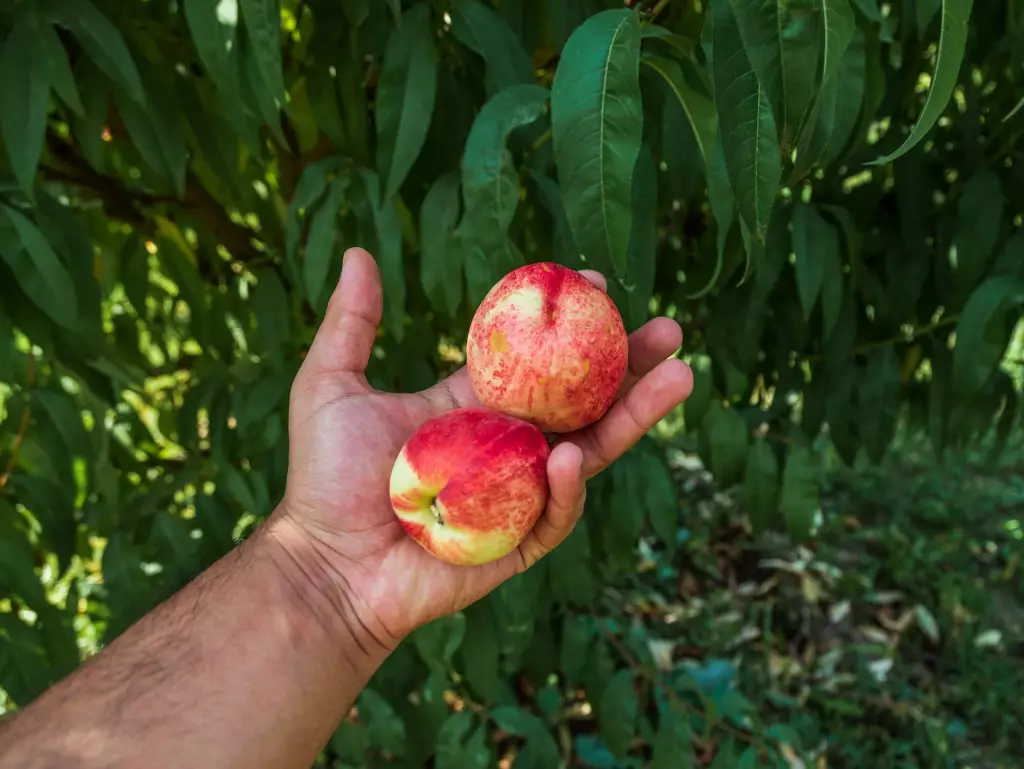
Tree varieties
You have the choice between clingstone and freestone nectarine varieties. Freestones are generally preferred as their flesh separates easily from the pit.
Care tips
- Soil: Plant in well-draining soil.
- Watering: Keep the soil consistently moist.
- Pruning: Required to maintain a strong tree structure.
Mature size
- Height: Varies between 12 and 25 feet, depending on the type (standard or semi-dwarf).
- Width: Generally matches the height.
Custard Apple Tree - Annona Reticulata
This attractive tree not only provides luscious fruit but also adds a tropical feel to your landscape. The tree doesn't tolerate standing water, so proper drainage is key to prevent root diseases. You'll want to plant it in a spot that gets adequate sunlight, as this will maximize fruit production.
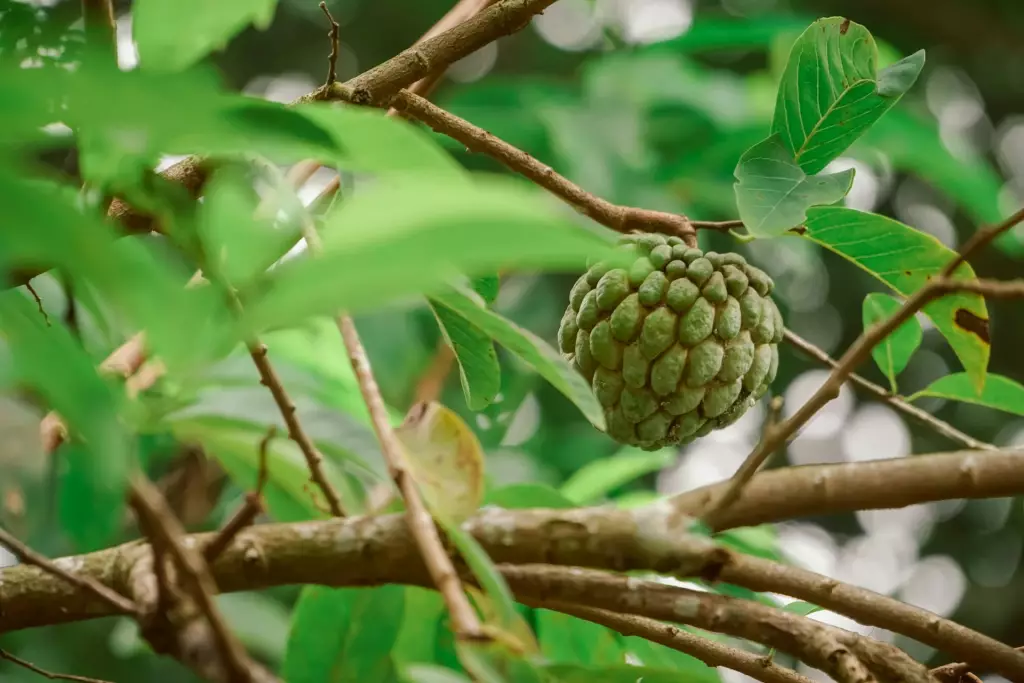
Your Custard Apple Tree will require the following:
- Plant in well-drained soil.
- Choose a sunny location.
- Water regularly, keeping soil moist.
Pineapple Plants
Pineapples require well-drained, acidic soil, which aligns well with the conditions found in this coastal area. To start, choose a healthy pineapple from the store and use the top for propagation.
Here's how to plant a pineapple:
- Prepare the top: Cut the top off and strip some of the lower leaves to expose the stem.
- Dry the stem: Allow it to dry for a few days to prevent rot.
- Plant the top: Insert the stem into a pot filled with well-draining soil mix.
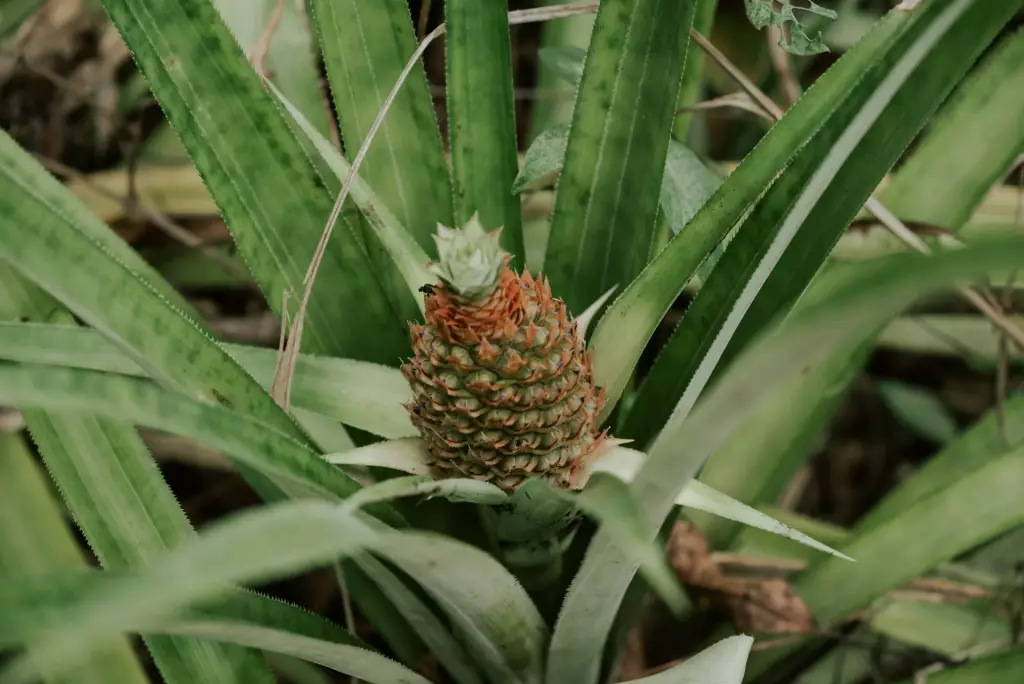
Pineapples are relatively low-maintenance. They need consistent warmth, so ensure they're in a spot that gets plenty of sunshine. Water them moderately, as they are drought-tolerant and prefer not to sit in waterlogged soil. With patience, you can nurture a pineapple plant to fruit—the ultimate reward for your gardening efforts.
In this climate, typically, it takes about 18-24 months for a pineapple to mature and be ready to harvest. Keep an eye out for a change in color to know when your pineapple is ripe and ready to enjoy.
